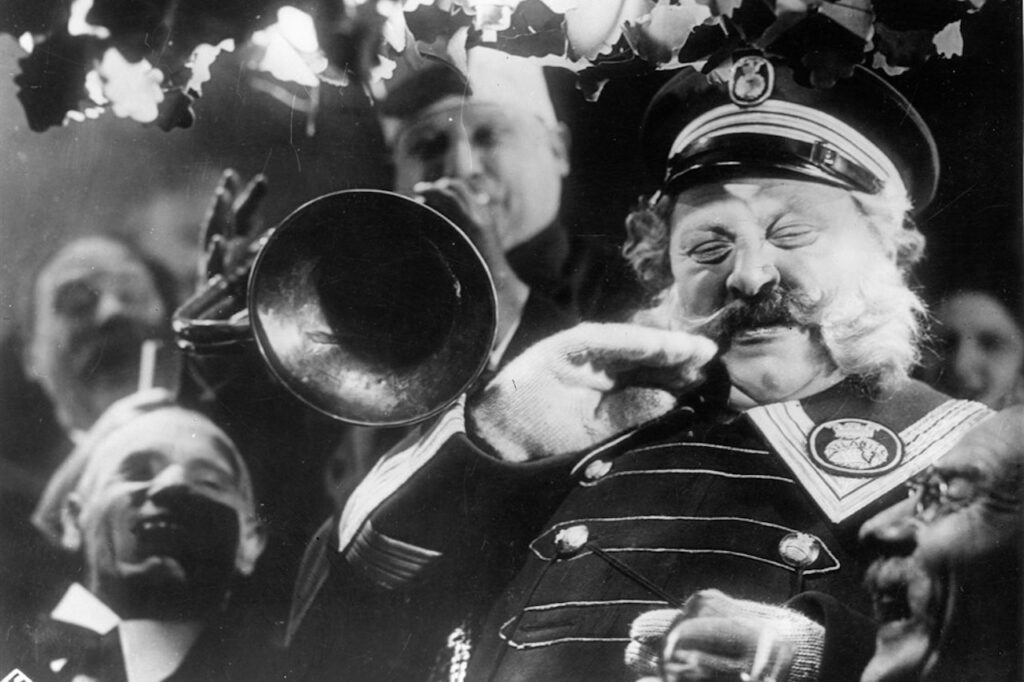
Murnau, Lang, and Weine are three of the most world renowned German Filmmakers of all time. It was at the dawn of the 1920s that Germany experienced a renaissance of art which incorporated elements and ideas from Dadaism and early Surrealism to create Expressionism. In film, the aesthetic translation of these components is breathtaking and wholly original, manifested as the “mind as image”. The expressionists took character out of the confines of the actor, and truly made it the entire production. Robert Weine’s Cabinet of Dr. Caligari (1921) manipulates the entire set to convey the mental turmoil of its protagonist. Walls were painted with a variety of images, often using depth to create the illusion that the actors occupied a space within an expressionist painting. To further the dementia within the piece, actors adorn make-up that gives them an “illustrated” quality.
In F.W. Murnau’s The Last Laugh, shadows are used to indicate the emotional upheaval of the “last doorman”. Murnau first deploys this method in a scene where “the last doorman” enters the latrine, which is completely blacked out in shadow, which to “the doorman” is a kind of hell on earth. Secondly, shadow is used very well upon the doorman’s entrance to his housing development. First, the audience sees his shadow, stooped and weak. Then, the doorman retreats, only to re-enter permanently, proceeded by a shadow showing us a man standing upright and proud. In each scenario, Murnau has deployed this tactic effectively to indicate the “doorman’s situation. In later years, German director Werner Herzog cited the unconventional manipulation of environment to convey character’s emotion and drive as a motive to hypnotize the cast of his film Heart of Glass (1976).
Murnau’s masterful use of sets first became a focal point of his productions in Nosteratu. The sequence with Nosferatu atop his sail ship, with waves and rain thrashing all about, is totally artificial. The rain throughout The Last Laugh is also artificial, as is everything for that matter, since the entire film was shot on a soundstage. Even more incredible than Murnau’s illusion of the elements is the grandeur of his set work, incorporating a locomotive, an apartment block, and a main drag, complete with automobiles. This also enabled Murnau to have complete control over his lighting, his extras, etc.
